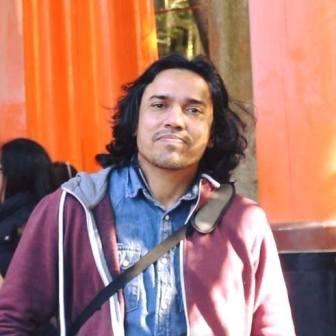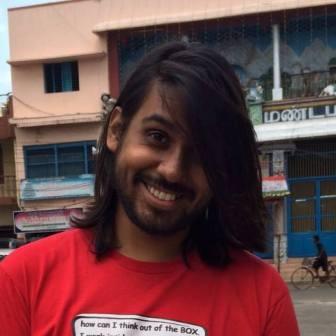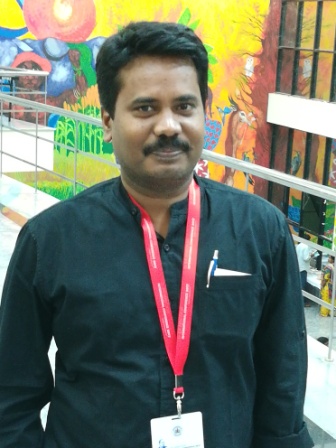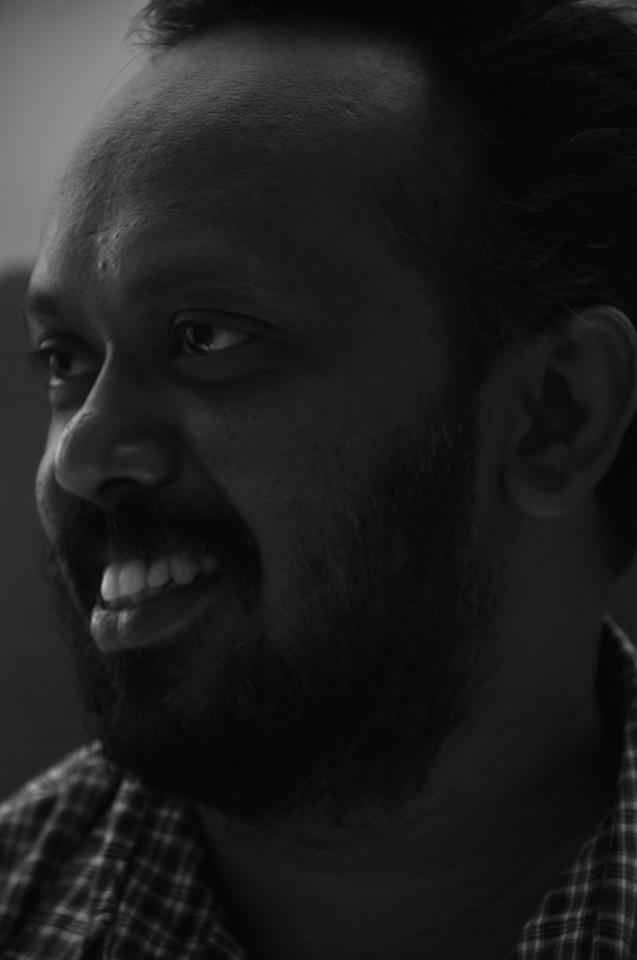Sufi Ghulam Hussain
 There is abundant literature on Dalit/Dalitbahujan ideology that is being consumed in academia globally; however, the mainstreaming of Dalitbahujan theory is yet to take place. The empirical studies on Dalitbahujans are increasingly becoming the subject of study and curricula in different universities in India, such that the emergence and subsequent receptivity of essentially Dalitbahujan theory in coming years seem quite predictable. Dalitbahujan scholars argue that it is now possible to say that there is ‘theory of theory’ that has emerged out of Dalit intellectual assertions, and that can question both the Western Universalist claims and the ontological hegemony of Brahmanism in academia. Kancha Ilaiah writing in 2010 contends that:
There is abundant literature on Dalit/Dalitbahujan ideology that is being consumed in academia globally; however, the mainstreaming of Dalitbahujan theory is yet to take place. The empirical studies on Dalitbahujans are increasingly becoming the subject of study and curricula in different universities in India, such that the emergence and subsequent receptivity of essentially Dalitbahujan theory in coming years seem quite predictable. Dalitbahujan scholars argue that it is now possible to say that there is ‘theory of theory’ that has emerged out of Dalit intellectual assertions, and that can question both the Western Universalist claims and the ontological hegemony of Brahmanism in academia. Kancha Ilaiah writing in 2010 contends that:
“Before I joined as a fellow, no intellectual working at this prestigious center had considered constructing the nationalist history and thought from that perspective perhaps because in their view there were no such things as a Dalitbahujan perspective. It is possible that for them, only that which has been recognized by Western scholarship counts as a perspective. And, what I define as the Dalitbahujan perspective has not got recognition from any Western institutions. Besides, I am not a thinker who carries the certificate of any Western university.[1, p. IX]
Taking Dalitbahujan claims with some skepticism, one can at least argue that they have generated a vigorous critique of South Asian, particularly Indian societies, such that there has emerged a kind of theoretical perspective that sets it apart from any other existing theoretical approaches to study the problem of caste, class, and oppression. Moving beyond the “politics of presence or symbolic recognition in political and civil society,” the emergent Dalitbahujan scholarship delves into the theoretical realm to do away with the dichotomy between ‘theoretical Brahmins’ and ’empirical Shudras’ [2, p. 130].
Critique of the Western and Brahmanical ‘universal’ is followed by the alternative claims to universality by Dalit scholars. Guru argues that Dalit critique is a universal critique of Indian democracy because it asks universal questions, such as the question of human dignity; and in terms of democracy its vision of egalitarianism, and the struggle for the social justice through the egalitarian proposal of ‘one person one value'[3]. According to Gopal Guru, language or discourse employed to construct the counter-hegemonic discourses is of central importance [4, p. 38]. In a paper written to analyze the Dalit Intellectual Collective (DIC)1 Gopal Guru argued that “While ideology is important, it is not enough for developing an emancipatory social theory. That has to be achieved through a nuanced understanding of a complex social reality.” [2, p. 130] Delineating the Dalit differential, as it stands now, Aniku Kumar Vijayan has hinted that:
“Dalit discourse is dialectically situated in various historical contexts and discursive systems in order to arrive at the point that untouchability as a political doctrine is not an obsolete project of a bygone era but is very much the built-in mechanism of emancipatory praxis as well as theoretical mediations.”[5].
Regarding disparity between Dalit theory and practice, Guru argued that while upper caste (nationalists and the Marxists) had theory devoid of organic content, Dalits and the indigenous (Adivasi) had the organic content lacking in the elaborate form of the theory [4, 6, 2]. Guru blames that disparity on the institutionalized exclusion of Dalits from the centers of theoretical articulation. Dalitbahujan response acts “as a moral counterweight to the language of politics” that sought to humiliate Dalitbahujan leaders and denigrate Dalit theoretical deficiency [2, p. 130].
DBP externalized through Dalit assertions, is the product of the dialectical interplay between crises and the contradictions that emerge from within the caste-ridden society of South Asia. It is derived from Dalitbahujan ideological narrative that explores and analyzes South Asian societies, the problem of caste, Dalit oppression, and class-caste-gender based inequalities from immanent and emancipatory angle [7]. It facilitates the self-reflective critique of both identity politics of different castes and groups, as well as affords the vision to transcend identity politics and unite the oppressed against the oppressor. Hence, it is the dialectical approach that generates not only critical theory but also the critique of dominant or hegemonic ideologies, narratives, and social systems. DBP, being immanent ontologically[7], does not radically separate theory from practice, or theory from ideology or politics. Therefore, theory-building should be taken here as an exercise to make sense of the political while extracting theory out of it. Following this line of thought, I have, in particular, tried to understand caste culture and Dalit assertions, through the use of ‘Dalit’ as a term of reference, and ‘Dalitbahujan’ as a perspective that unleashes the whole range of deliberate use of agitating conceptual tools.
DBP can be understood in terms of the different critiques of the South Asian society such as, the critique of neoliberal political economy, the critique of ‘Desi‘ and ‘derivative‘ discourses[3, 4, 8, 9]; of Brahmanism and the upper caste; of identity politics; of Indian academia and the theoretical universals[10, 6, 11]; of the denial of caste and Dalit oppression; Dalit feminist critique of patriarchy[12, 13, 14, 15, 16]; critique of colonialism and postcolonialism, and its alternative approach to analyze internal colonialism; critique of the “bahishkrut Bharat” (India of the ostracized) and its alternative of “prabuddha Bharat” (enlightened India) [17, p. 259]. It can also be understood from the counterclaims to universality and alternatives proffered by the Dalit scholars, such the claims to anubhava ‘authentic experience’, and the epistemic primacy of the ‘Dalit’ or the oppressed[18, 7]. Yet, more importantly, it can be approached from analytical angle to understand South Asian society, such as by evaluating it by its emphasis on inter-subjectivity, immanence, criticality, emancipation, and assertiveness; emphasis on the understanding intersectionality of oppression, and the embeddedness of caste-class-gender and race. It can be understood from its focus on its goal of manuski (dignity or self-respect) [19] and the redefinition of reproduced untouchability [20, p. 210]. It can also be understood from the neologisms, by breaking the South Asian society into binary and multiple social and analytical vocabularies employed by it, such as Dalitbahujan-savarnaii, upper caste-lower caste, Adivasi, Scheduled Caste, and the whole range of Ambedkarian terminologies such as “mitrata“iii and “karuna“iv,[21, p. 5432, 7]
Claims and counterclaims to universality
Universalist appeal is argued to be already there in Ambedkarian mission of annihilation of caste i.e., in transcending or surpassing identity politics of caste, [22], analysis of graded caste inequalities, associational (social) democracy, drive for self-respect, proportionate electoral system [23], and Ambedkarian critique of oligarchic state patronage [24]. However, Ambedkarian concepts are required to be theoretically refined at the academic level for analytic purposes. Gopal Guru argues that:
[Dalit political narrative] has emerged and developed in adversarial intellectual conditions where thinkers like Ambedkar and Phule did not have resources to fall back on and hence were forced to draw on those produced by the collective cultural and intellectual practices of the “Shudra-atishudra communities”. It is the experience and not the already available text that led to the reflective intellectual consciousness among the thinkers from the Shudra-atishudra community. [4, p. 38]
This lack of available intellectual privilege pushed Dalit thinkers to go ‘Beyond’, both ‘Desi‘ (Hindutva and nationalist) and ‘Derivative’ (Western) discourses [that] “have been treated as the hegemonic terrain of public inquiry characterizing “argumentative India” [4, p. 38]. It is more sensitive to capture the historical forms of oppression “and normative substance of sociopolitical thinking” [4, p. 38]. Because of this lack of given theoretical tradition, according to Guru, Dalit thinkers do not fit “into the definitional framework of political thought”. The dissonance, difference and defiance, the assertion of “no” and anti-skepticism which is so prominent in Dalit thought, “creates interruptions in the conceptual stability and universal validity of the hegemonic thought.” It recasts the “real (largely un-thought), such as untouchability, into reflection” “thus elevating it from mere description to its universal abstraction.” [4, p. 38]. These Dalitbahujan claims to universal abstractions can be further understood from eight major critiques:
1. Critique of theoretical approach to racism
2. Critique of Marxism
3. Critique of Hindutva
4. Critique of the ‘universal’ in academia
5. Critique of identity politics, human rights paradigm and neoliberal nationalism
6. Dalit feminist critique
7. Pasmanda-Muslim critique of caste
8. Mulnivasi-adijan critiques of caste and Dalit identity
In the final analysis, I would say that Dalitbahujan critique provides the best analytic approach for social scientists to understand South Asian societies. Since caste lies at the core of social and political relations, it is the basis of antagonistic relations, both at micro-political and macro-political level, it is the most valid reference point for all kinds of oppression and structural inequalities in South Asia, and will continue to be so, till it is either annihilated, or made really atavistic. DBP has emerged to serve that vital function.
This excerpt is taken from an unpublished PhD thesis chapter ‘Mainstreaming Dalibahujan perspective’.
Works Cited
1. K. Ilaiah, The Weapon of the Other: Dalitbahujan Writings and the Remaking of Indian Nationalist Thought, Pearson Education, 2010, p. 192.
2. G. Guru and V.Geetha, “New Phase of Dalit-Bahujan Intellectual Activity,” Economic and Political Weekly, vol. 35, no. 3, pp. 130-134, 2000.
3. G. Guru, “Prof. Gopal Guru “Dalit critique of Liberal Democracy,” March 2012. [Online]. Available: https://www.youtube.com/watch?v=c9wR-U78XzA. [Accessed 28 January 2017].
4. G. Guru, “The Idea of India: ‘Derivative, Desi and Beyond’,” Economic and Political Weekly, vol. 46, no. 37, pp. 36-42, Septemeber 2011.
5. A. P. Vijayan, “The Unbearable Sameness of Being and the Logic of Dalit Difference,” Contemporary Voice of Dalit, vol. 9, no. 1, pp. 1-12, 2017.
6. G. Guru, “The Language of Dalitbahujan Political Discourse,” in Dalit Identity and Politics, New Delhi, Sage Publications, 2001.
7. G. Guru and S. Sarukai, The Cracked Mirror: An Indian Debate on Experience and Theory, New Delhi: Oxford University Press, 2012, p. 264.
8. A. Teltumbde, “Dalit Capitalism and Pseudo Dalitism,” 7 March 2011. [Online]. Available: http://www.countercurrents.org/teltumbde070311.htm.
9. A. Teltumbde, Dalits: Past, present, and future, Routledge, 2016, p. 190.
10. G. Guru, “Appropriating Ambedkar,” Economic and Political Weekly, vol. 26, no. 27/28, pp. 1697-1699, 1991.
11. V. Kumar, “Situating Dalits in Indian Sociology,” Sociological Bulletin, vol. 54, no. 3, pp. 514-532, September – December 2005.
12. G. Guru, “Dalit women talk differently,” Economic and Political Weekly, vol. 30, no. 41, pp. 2548-2550, 14-21 October 1995.
13. M. S. &. A. Kundu, “Et Tu ‘Feminists’?: A response to the Kafila signatories,” Roundtable India, vol. Roundtable India, 28 October 2017.
14. A. Rao, Gender & Caste, vol. Volume 1 of Issues in contemporary Indian feminism, A. Rao, Ed., Kali for Women, 2005, p. 9788188965205.
15. P. Lata, “Silenced by Manu and ‘Mainstream’ Feminism: Dalit-Bahujan Women and their History,” Roundtable India, 8 May 2015.
16. M. S. Margaret, “Dalit Feminism,” Roundtable India, 8 March 2012.
17. G. Guru, “The Language of Dalitbahujan Political Discourse,” in Class, Caste, Gender, New Delhi, Sage Publications India Pvt Ltd, 2004, pp. 256-266.
18. G. Guru, Humiliation: Claims and Context, G. Guru, Ed., Oxford University Press, 2009.
19. G. Guru, “”Caste and Contemporary India” Conference: Day 2 – Closing Plenary Session,” 24 August 2010. [Online]. Available: https://www.youtube.com/watch?v=Hgu6NwT-hek&t=2226s. [Accessed 1 June 2017].
20. G. Guru and S. Sarukkai, The Cracked Mirror: An Indian Debate on Experience and Theory, New Delhi: Oxford University Press, 2012.
21. S. Palshikar, “Understanding Humiliation,” Economic and Political Weekly, vol. 40, no. 51, pp. 5428-5432, 2005.
22. B. Ambedkar, Annihilation of Caste with a Reply to Mahatma Gandhi, 3rd ed., 1944.
23. B. R. Ambedkar, Dr. Babasaheb Ambedkar : Writings and Speeches, Vol.5, vol. 5, New Delhi: Dr. Ambedkar Foundation, Ministry of Social Justice & Empowerment, Govt. of India, 2014 (1989).
24. B. R. Ambedkar, Dr. Babasaheb Ambedkar, Writings and Speeches, Vol.9, vol. 9, V. Moon, Ed., New Delhi: Dr. Ambedkar Foundation,Ministry of Social Justice & Empowerment, Govt. of India, 2014 (1991).
25. S. Jhodka and G. Shah, “Comparative Contexts of Discrimination:Caste and Untouchablity in South Asia,” Economic and Political Weekly, pp. 99-106, 2010.
26. V. B. Rawat, “Rising Dalit assertion to counter dominant Brahmanical political narratives,” 15 August 2017. [Online]. Available: https://cafedissensus.com/2017/08/15/rising-dalit-assertion-to-counter-dominant-brahmanical-political-narratives/.
27. R. Sachar, “Social, Economic and Educational Status of the Muslim Community in India [“Sachar Committee Report] (2004–2005)”,” Government of India, New Delhi, 2006.
28. A. Thorat and O. Joshi, “So Who is Practicing Untouchability in India?,” 26 8 2015. [Online]. Available: https://ihds.umd.edu/blog/so-who-practicing-untouchability-india.
29. UN’s Human Rights Council, Report of the Special Rapporteur on minority issues (A/HRC/31/56), United Nations, 2016.
30. Z. Shah, “Long Behind Schedule:A Study on Plight of Scheduled Caste Hindus in Pakistan,” TRDP & PILER, 2007.
31. V. Prashad, “The Untouchable Question,” Economic and Political Weekly, vol. 31, no. 9, pp. 551-559, 1996.
32. R. Srivastava, “Bonded Labor In India:Its Incidence and Pattern,” International Labour Office, Jeneva, 2005.
33. A. Ercelawn and M. Nauman, “Bonded Labour In Pakistan:An Overview,” Pakistan Institute of Labor Education and Research, 2001.
34. B. R. R. Ambedkar, “States and Minorities (Memorandum on the Safeguards for Scheduled Castes),” Governmentt of India, Bombay, 1947.
35. B. R. Ambedkar, WHO WERE THE SHUDRAS ?, vol. 1, Ssoft Group, 2014.
36. B. R. Ambedkar, The untouchables who were they and why they became untouchables, Kalpaz Publications, 2017.
37. D. Ambedkar, Dr.Babasaheb Ambedkar:Writings and Speeches Vol.13, vol. 13, V. Moon, Ed., Ambedkar Foundation, 2014.
38. Kuffir, “Brahmanism: Colonisation of Words and Land,” 4 August 2015. [Online]. Available: http://roundtableindia.co.in/index.php?option=com_content&view=article&id=8299%3Acolonization-of-knowledge-produces-colonization-of-land-and-life&catid=119&Itemid=132.
39. D. Patnakar, “Characteristics of Contemporary Caste System,” 2013.
40. V. Kumar, Caste and Democracy in India: A Perspective from Below, Gyan Publishing House, 2014.
41. V. Kumar, India’s Roaring Revolution: Dalit Assertion and New Horizons, New Delhi: Gagandeep Publications, 2006.
42. V. Kumar, “How Egalitarian Is the Indian Sociology,” Economic and Political Weekly, vol. LI, no. 25, pp. 33-39, June 2016.
43. G. Guru, “Dalit Movement in Mainstream Sociology,” Economic and Political Weekly, vol. 28, no. 14, pp. 570-573, 1993.
44. G. Guru, Atrophy in dalit politics, vol. DIC book series, Vikas Adhyayan Kendra, 2005, p. 133.
45. S. Rege, Against the madness of Manu, Navayana.org, 2013.
46. S. Rege, Writing Caste, Writing Gender: Reading Dalit Women’s Testimonios, Zuban, 2006, p. 388.
47. G. M. Geogrge, “Caste Dynamics, Resource Politics and Social Justice: A critical Epistemology,” Journal of People’s Studies, vol. 1, no. 2, 2015.
48. K. A. Ansari, “Towards a Post-minority Condition,” 18 Janurary 2017. [Online]. Available: http://roundtableindia.co.in/index.php?option=com_content&view=article&id=8937:towards-a-postminority-condition&catid=119&Itemid=132. [Accessed 7 May 2017].
Notes
i. Dalit Intellectual Collective (DIC), was launched in 2000 by both Dalit and non-Dalit scholars to develop a vibrant Dalit theoretical alternative, and lessen the reliance on ideological polemic. Romila Thapar, Kancha Ilaiah, Satyanarayana, Panicker, Gail Omvedt, Anand Teltumbde, Gajendran, V. Geetha, Rajeev Bhargav and several other Dalit and non-Dalit scholars became part of the collective and set certain rules to engage both Dalits and non-Dalits in a constructive debate. The scholars were divided into two basic categories – “those who make statements (most of them Dalits) and interrogators who are expected to be creative and constructive and not patronizing”. The DIC did “not seek only to audit the external adversaries of the Dalits” but also wanted to go in for an audit of the Dalit intellectual tradition and culture, which create and sustain internal hierarchies.” [34, p. 130] It was probably the second systematic attempt led by Dalit intellectuals, and involving some leading non-Dalit scholars, to bring about a major shift in Indian epistemic domains.
ii. Savarna is the Hindi term often used in derogatory or negative sense to refer to three traditionally dominant classes of castes among Hindus, namely, Brahmin, Kshatriya, and Vaishya.
iii. “Mitarata” is the Budhist concept of ‘Spiritual friendship’.
iv. ‘Karuna’ in Buddhist traditions means ‘compassion’ considered necessary, along with wisdom, to realize enlightenment.
~~~
Sufi Ghulam Hussain is a PhD scholar at Bielefeld University, Germany. He is doing research on caste politics and Dalits assertions in Pakistan.










